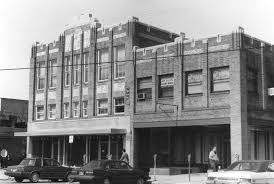HISTORY AND CHARACTERISTICS OF ART DECO ARCHITECTURE
Art Deco is a decorative and design style that emerged in the 1920s and 1930s, in the aftermath of World War I. It is characterized by bold, geometric forms, symmetrical shapes, and the use of luxurious materials such as marble, brass, and chrome. Art Deco architecture is a particular branch of this style that was used in the design of buildings, both commercial and residential.
History
Art Deco architecture emerged as a reaction against the ornate, highly decorative styles that had dominated the preceding decades, such as Art Nouveau and Beaux-Arts. It was influenced by the streamlined shapes of modern industrial design and the new technologies that were revolutionizing construction and transportation.
The term “Art Deco” was first used in the 1960s, when the style experienced a revival in popularity. However, at the time of its creation, it was simply known as “modern” or “moderne” design. The style was used widely in the design of buildings in the United States, Europe, and other parts of the world during the 1920s and 1930s.
Characteristics
Art Deco architecture is characterized by its use of bold, geometric shapes, often with a strong emphasis on symmetry. The style often features elaborate facades with ornate details, such as stylized floral or animal motifs. Buildings were often designed with streamlined curves and sharp angles, reflecting the influence of modern industrial design.
Art Deco buildings often used luxurious materials such as marble, brass, and chrome, as well as brightly colored ceramics and glass. The use of these materials was meant to convey a sense of opulence and modernity.
Another important characteristic of Art Deco architecture is its emphasis on verticality. Buildings were often designed with tall, slender towers and spires that reached towards the sky, reflecting the spirit of optimism and progress that characterized the era.
Examples of Art Deco architecture
Art Deco architecture can be found all over the world, but some of the most famous examples are found in New York City. The Empire State Building, completed in 1931, is a prime example of the style, with its sleek, angular lines and Art Deco-inspired details.
Another famous example of Art Deco architecture is the Chrysler Building, also located in New York City. Completed in 1930, the building features a distinctive spire with intricate Art Deco details.
In Miami Beach, the iconic Delano Hotel is an excellent example of Art Deco architecture in the United States. The building, completed in 1947, features a striking white facade with bold, geometric patterns and rounded corners.
Conclusion
Art Deco architecture is a fascinating style that reflects the optimism and glamour of the 1920s and 1930s. Its bold, geometric forms and luxurious materials continue to inspire designers and architects today, making it a timeless and enduring style.


